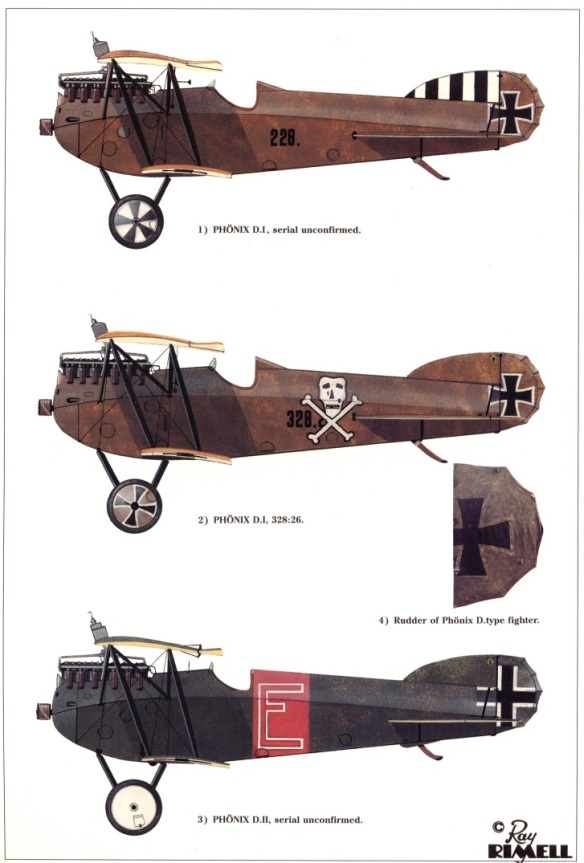Whereas Austria-Hungary had developed one of the world’s first successful reconnaissance aircraft-the Etrich Taube-it lacked the financial resources and industrial infrastructure to see substantial increases in aircraft production until the last 2 years of the war. One reason for its problems was that its overreliance upon Lohnerwerke GmbH before the war had left Austria-Hungary without a strong domestic industry, forcing it to allow German firms (Albatros, Aviatik, and Deutsche Flugzeug Werke) to establish subsidiary divisions within the country, something it had been reluctant to do before the war. In addition, Austria-Hungary allowed the somewhat unscrupulous financier Camillo Castiglioni to obtain a virtual monopoly over the aircraft industry when he purchased Igo Etrich’s Brandenburg company (later known as Hansa-Brandenburg) and gained controlling interest in Phönix Flugzeugwerke A. G. and the Ungarische Flugzeug Werke AG (UFAG). Compared with their German counterparts, Austro-Hungarian firms were far less efficient, with approximately twice as many workers being required to build an airplane in 1918. As a result, Austria-Hungary had no choice but to import aircraft from Germany to meet its wartime needs. Nevertheless, the Austro-Hungarian aircraft industry did produce one of the war’s better fighters in the Phönix D. I, but it unfortunately came too late.
The Phönix D. I biplane was intended as a replacement for the Hansa-Brandenburg D. I. Although it was produced in smaller numbers (120 D. I, 45 D. II, and 48 D. IIa fighters) than the Aviatik D. I and did not begin entering service until October 1917, the Phönix D-series fighters are generally considered the best fighters designed and produced in Austria-Hungary.
Previously, the Phonix Flugzeug-Werke firm had been contracted to produce the Hansa-Brandenburg D I fighter under license. When it became apparent by 1917 that the infamous Star-strutter could not be developed further, the company embarked on a new aircraft. The design eventually incorporated a fuselage similar to the D I and also sported wings of unequal span that ended in rounded wingtips and swept-back leading edges. It was also considerably more powerful than the earlier machine, being propelled by a 200- horsepower Hiero engine. One interesting innovation was locating the armament within the engine cowling. This enhanced streamlining but placed the guns beyond the pilot’s reach if they jammed. The resulting craft was faster in level flight but somewhat unstable and slow-climbing. The Austrian government, hardpressed on all fronts, nonetheless ordered the new craft into immediate production. In the spring of 1918 it entered service as the Phonix D I and was deployed with army and navy units.
The new machine was far from perfect, but it represented a dramatic improvement over the earlier Star-strutter. In capable hands the D I proved more than a match for the Italian Hanriots and SPADs. The D. II series was lightened by approximately 100 lbs and featured a more aerodynamic wing design, resulting in improved maneuverability. The D. IIa was powered by a 230 hp Hiero inline motor, which increased maximum speed to 115 mph and slightly improved its rate of climb. All versions featured twin-synchronized Schwarzlose machine guns, but they were placed within the engine cowling, which denied the pilot access in the event of a jam. Nevertheless, it proved to be a match for Allied fighters.
The new D II model had introduced balanced elevators and other refinements, but the craft was judged too stable for violent acrobatics. On this basis, a few machines were fitted with cameras to pioneer single-seat high-speed reconnaissance work.
An improved model, the D. III, was entering production just as the war ended, but none saw service. Sweden purchased twenty-one Phönix D. III fighters after the war and later produced an additional seventeen after obtaining the license rights. It remained in service with the Swedish Army Air Force until 1933.
Phonix then concocted the D III model shortly before hostilities concluded. It featured a more powerful engine and ailerons on all four wings, which greatly improved all-around maneuverability. The war ended before the D III could be deployed, but 158 examples of all versions were delivered.
After the war, Sweden expressed interest in obtaining several copies of the D III along with manufacturing rights. Seventeen were ultimately constructed, and they rendered useful service until 1933.
Type: Fighter
Dimensions: wingspan, 32 feet, 2 inches; length, 21 feet, 9 inches; height, 9 feet, 5 inches
Weights: empty, 1,510 pounds; gross, 2,097 pounds
Power plant: 1 x 230-horsepower Hiero liquid-cooled engine
Performance: maximum speed, 117 miles per hour; ceiling, 22,310 feet; range, 217 miles
Armament: 2 x 7.92mm machine guns
Service dates: 1918-1933
